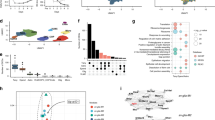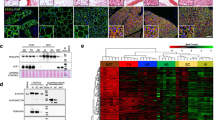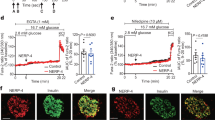Abstract
We recently showed that perineuronal nets (PNNs) enmesh glucoregulatory neurons in the arcuate nucleus (Arc) of the mediobasal hypothalamus (MBH)1, but whether these PNNs play a role in either the pathogenesis of type 2 diabetes (T2D) or its treatment remains unclear. Here we show that PNN abundance within the Arc is markedly reduced in the Zucker diabetic fatty (ZDF) rat model of T2D, compared with normoglycaemic rats, correlating with altered PNN-associated sulfation patterns of chondroitin sulfate glycosaminoglycans in the MBH. Each of these PNN-associated changes is reversed following a single intracerebroventricular (icv) injection of fibroblast growth factor 1 (FGF1) at a dose that induces sustained diabetes remission in male ZDF rats. Combined with previous work localizing this FGF1 effect to the Arc area2,3,4, our finding that enzymatic digestion of Arc PNNs markedly shortens the duration of diabetes remission following icv FGF1 injection in these animals identifies these extracellular matrix structures as previously unrecognized participants in the mechanism underlying diabetes remission induced by the central action of FGF1.
This is a preview of subscription content, access via your institution
Access options
Access Nature and 54 other Nature Portfolio journals
Get Nature+, our best-value online-access subscription
$29.99 / 30 days
cancel any time
Subscribe to this journal
Receive 12 digital issues and online access to articles
$119.00 per year
only $9.92 per issue
Buy this article
- Purchase on Springer Link
- Instant access to full article PDF
Prices may be subject to local taxes which are calculated during checkout




Similar content being viewed by others
Data availability
The data that support the findings of this study are available from the corresponding author upon request. Source data are provided with this paper.
References
Mirzadeh, Z. et al. Perineuronal net formation during the critical period for neuronal maturation in the hypothalamic arcuate nucleus. Nat. Metab. 1, 212–221 (2019).
Scarlett, J. M. et al. Central injection of fibroblast growth factor 1 induces sustained remission of diabetic hyperglycemia in rodents. Nat. Med. 22, 800–806 (2016).
Scarlett, J. M. et al. Peripheral mechanisms mediating the sustained antidiabetic action of FGF1 in the Brain. Diabetes 68, 654–664 (2019).
Brown, J. M., et al. The hypothalamic arcuate nucleus–median eminence is a target for sustained diabetes remission induced by fibroblast growth factor 1. Diabetes, 98, 1054–1061(2019).
Blumcke, I., Eggli, P. & Celio, M. R. Relationship between astrocytic processes and ‘perineuronal nets’ in rat neocortex. Glia 15, 131–140 (1995).
Schwartz, M. W., Woods, S. C., Porte, D. Jr., Seeley, R. J. & Baskin, D. G. Central nervous system control of food intake. Nature 404, 661–671 (2000).
Morton, G. J. & Schwartz, M. W. The NPY/AgRP neuron and energy homeostasis. Int. J. Obes. Relat. Metab. Disord. 25, S56–S62 (2001).
Morawski, M., Bruckner, G., Arendt, T. & Matthews, R. T. Aggrecan: beyond cartilage and into the brain. Int. J. Biochem. Cell Biol. 44, 690–693 (2012).
Soares da Costa, D., Reis, R. L. & Pashkuleva, I. Sulfation of glycosaminoglycans and its implications in human health and disorders. Annu. Rev. Biomed. Eng. 19, 1–26 (2017).
Testa, D., Prochiantz, A. & Di Nardo, A. A. Perineuronal nets in brain physiology and disease. Semin. Cell Dev. Biol. 89, 125–135 (2019).
Hrabetova, S., Masri, D., Tao, L., Xiao, F. & Nicholson, C. Calcium diffusion enhanced after cleavage of negatively charged components of brain extracellular matrix by chondroitinase ABC. J. Physiol. 587, 4029–4049 (2009).
Properzi, F. et al. Chondroitin 6-sulphate synthesis is upregulated in injured CNS, induced by injury-related cytokines and enhanced in axon-growth inhibitory glia. Eur. J. Neurosci. 21, 378–390 (2005).
Djerbal, L., Lortat-Jacob, H. & Kwok, J. Chondroitin sulfates and their binding molecules in the central nervous system. Glycoconj. J. 34, 363–376 (2017).
Mizumoto, S., Yamada, S. & Sugahara, K. Molecular interactions between chondroitin–dermatan sulfate and growth factors/receptors/matrix proteins. Curr. Opin. Struct. Biol. 34, 35–42 (2015).
Li, Q., et al. Impaired cognitive function and altered hippocampal synaptic plasticity in mice lacking dermatan sulfotransferase Chst14/D4st1. Front. Mol. Neurosci. 12, 26 (2019).
Alonge, K. M. et al. Quantitative analysis of chondroitin sulfate disaccharides from human and rodent fixed brain tissue by electrospray ionization-tandem mass spectrometry. Glycobiology 29, 847–860 (2019).
Miyata, S., Komatsu, Y., Yoshimura, Y., Taya, C. & Kitagawa, H. Persistent cortical plasticity by upregulation of chondroitin 6-sulfation. Nat. Neurosci. 15, 414–422 (2012).
Bouret, S. G., Draper, S. J. & Simerly, R. B. Trophic action of leptin on hypothalamic neurons that regulate feeding. Science 304, 108–110 (2004).
Srinivasan, K., Viswanad, B., Asrat, L., Kaul, C. L. & Ramarao, P. Combination of high-fat diet-fed and low-dose streptozotocin-treated rat: a model for type 2 diabetes and pharmacological screening. Pharmacol. Res. 52, 313–320 (2005).
Hamai, A. et al. Two distinct chondroitin sulfate ABC lyases. An endoeliminase yielding tetrasaccharides and an exoeliminase preferentially acting on oligosaccharides. J. Biol. Chem. 272, 9123–9130 (1997).
Miyata, S. & Kitagawa, H. Mechanisms for modulation of neural plasticity and axon regeneration by chondroitin sulphate. J. Biochem. 157, 13–22 (2015).
Bruckner, G. et al. Acute and long-lasting changes in extracellular-matrix chondroitin-sulphate proteoglycans induced by injection of chondroitinase ABC in the adult rat brain. Exp. Brain. Res. 121, 300–310 (1998).
Enwright, J. F. et al. Reduced labeling of parvalbumin neurons and perineuronal nets in the dorsolateral prefrontal cortex of subjects with schizophrenia. Neuropsychopharmacology 41, 2206–2214 (2016).
Mauney, S. A. et al. Developmental pattern of perineuronal nets in the human prefrontal cortex and their deficit in schizophrenia. Biol. Psychiatry 74, 427–435 (2013).
Bitanihirwe, B. K. Y. & Woo, T.-U. W. Perineuronal nets and schizophrenia: the importance of neuronal coatings. Neurosci. Biobehav. Rev. 45, 85–99 (2014).
Nadanaka, S., Clement, A., Masayama, K., Faissner, A. & Sugahara, K. Characteristic hexasaccharide sequences in octasaccharides derived from shark cartilage chondroitin sulfate D with a neurite outgrowth promoting activity. J. Biol. Chem. 273, 3296–3307 (1998).
Clement, A. M. et al. The DSD-1 carbohydrate epitope depends on sulfation, correlates with chondroitin sulfate D motifs, and is sufficient to promote neurite outgrowth. J. Biol. Chem. 273, 28444–28453 (1998).
Koser, D. E. et al. Mechanosensing is critical for axon growth in the developing brain. Nat. Neurosci. 19, 1592–1598 (2016).
Xi, B. et al. Common polymorphism near the MC4R gene is associated with type 2 diabetes: data from a meta-analysis of 123,373 individuals. Diabetologia 55, 2660–2666 (2012).
Ellacott, K. L. & Cone, R. D. The role of the central melanocortin system in the regulation of food intake and energy homeostasis: lessons from mouse models. Philos. Trans. R. Soc. Lond. B Biol. Sci. 361, 1265–1274 (2006).
Bentsen, M. A., et al. Transcriptomic analysis links diverse hypothalamic cell types to fibroblast growth factor 1-induced sustained diabetes remission. Nat. Commun. (in press) (2020).
Kim, E. R. et al. Hypothalamic non-AgRP, non-POMC GABAergic neurons are required for postweaning feeding and NPY hyperphagia. J. Neurosci. 35, 10440–10450 (2015).
Xu, Y., O’Brien, W. G. III, Lee, C.-C., Myers, M. G. Jr. & Tong, Q. Role of GABA release from leptin receptor-expressing neurons in body weight regulation. Endocrinology 153, 2223–2233 (2012).
Wang, X. et al. Variability in Zucker diabetic fatty rats: differences in disease progression in hyperglycemic and normoglycemic animals. Diabetes Metab. Syndr. Obes. 7, 531–541 (2014).
Slaker, M. L., Harkness, J. H. & Sorg, B. A. A standardized and automated method of perineuronal net analysis using Wisteria floribunda agglutinin staining intensity. IBRO Rep. 1, 54–60 (2016).
Elias, C. F. et al. Leptin differentially regulates NPY and POMC neurons projecting to the lateral hypothalamic area. Neuron 23, 775–786 (1999).
Elias, C. F. et al. Chemical characterization of leptin-activated neurons in the rat brain. J. Comp. Neurol. 423, 261–281 (2000).
Schindelin, J. et al. Fiji: an open-source platform for biological-image analysis. Nat. Methods. 9, 676–682 (2012).
Osago, H. et al. Quantitative analysis of glycosaminoglycans, chondroitin/dermatan sulfate, hyaluronic acid, heparan sulfate and keratan sulfate by liquid chromatography-electrospray ionization-tandem mass spectrometry. Anal. Biochem. 467, 62–74 (2014).
Yu, S. et al. A rapid and precise method for quantification of fatty acids in human serum cholesteryl esters by liquid chromatography and tandem mass spectrometry. J. Chromatogr. B Analyt. Technol. Biomed. Life Sci. 960, 222–229 (2014).
Fitzmaurice, G. M., Laird, N. M. & Ware, J. H. Applied Longitudinal Analysis. (John Wiley & Sons, 2004).
Zar, J. Biostatistical Analysis 3rd edn, (Prentice Hall, 1996).
R Core Team. R: a language and environment for statistical computing. R Foundation for Statistical Computing. https://www.R-project.org/ (2016).
Acknowledgements
The authors are grateful for the technical assistance provided by T. Harvey, M. Matsen, N. Acharya, H. Nguyen and B.A. Phan. Histochemical work was supported by the Cellular and Molecular Imaging Core (CMIC) and funding to K.M.A. and J.M.S. by the UW Diabetes Research Center (DRC) National Institute of Diabetes and Digestive and Kidney Diseases (NIH-NIDDK) sponsored grant P30DK017047. Mass spectrometry work was supported by University of Washington School of Pharmacy Mass Spectrometry Center. This work was also supported by NIH-NIDDK grants: F32DK122662 (to K.M.A.), R01DK101997 (to M.W.S.), R01DK089056 (to G.J.M.), R01DK083042 (to G.J.M. and M.W.S.) and K08DK114474 (to J.M.S.), the National Institute of General Medical Sciences (NIH-NIGMS) grant R01GM127579 (to M.G.), the National Institute on Aging (NIH-NIA) grant T32AG052354 (to A.F.L.), the National Institute of Neurological Disorders and Stroke Neurosurgeon Research Career Development Program (NRCDP) K12 Award K12NS080223 (to Z.M.), the Department of Defense Peer Reviewed Medical Research Program W81XWH-20-1-0250 and the Barrow Neurological Foundation Grant 18-0025-30-05 (both to Z.M.). This work was also supported by the NIH-NIDDK diseases–funded Nutrition Obesity Research Center (NORC; P30DK035816). Additional funding to support these studies was provided to J.M.S. by the UW Royalty Research Fund (RRF; A139339). Funding was also provided to M.W.S. by Novo Nordisk (CMS-431104) and to M.A.B. by the Novo Nordisk Foundation (NNF17OC0024328) and the Novo Nordisk Foundation Center for Basic Metabolic Research, which is an independent research center at the University of Copenhagen partially funded by an unrestricted donation from the Novo Nordisk Foundation (NNF10CC1016515). Some figures were created with assistance from BioRender.com.
Author information
Authors and Affiliations
Contributions
K.M.A., Z.M., J.M.S., M.A.B., A.F.L., W.A.B., T.N.W., M.G., G.J.M. and M.W.S. contributed to experimental design, data interpretation and manuscript preparation, with input from all authors. In vivo studies were completed by K.M.A.; additional in vivo studies were conducted by J.M.S. and J.M.B. Immunofluorescence of human hypothalamic tissue was completed by Z.M. and E.C.; K.M.A., A.F.L. and C.K.C. performed the hypothalamic immunofluorescence stereological mapping, quantitative data analyses and protein biochemical analyses. Mass spectrometry analysis was performed and evaluated by K.M.A., M.G. and A.F.L. Statistical analysis was performed by K.J.K. and K.M.A.
Corresponding author
Ethics declarations
Competing interests
Support to M.W.S. was partly funded by Novo Nordisk. All other authors declare no competing interests.
Additional information
Peer review information Primary Handling Editor: Christoph Schmitt.
Publisher’s note Springer Nature remains neutral with regard to jurisdictional claims in published maps and institutional affiliations.
Extended data
Extended Data Fig. 1 Diabetic Wistar rats have reduced PNN CS-GAG structures in the arcuate nucleus.
Wistar rats were rendered diabetic by 2 wk of high fat diet (HFD) followed by a single injection of low-dose streptozotocin (STZ) (30 mg/kg sc) or citrate control and a, blood glucose and b, body weight were monitored for 24 d after treatment. Immunofluorescent detection of WFA (PNN CS-GAGs) and aggrecan (PNN CSPG) in coronal sections of rat hypothalamus (30 µm) from c, normoglycemic citrate Wistar controls and d, age-matched, hyperglycemic HFD/STZ Wistar rats. Scale bar: 200 µm. e, Quantification of the mean fluorescence intensity of PNNs averaged from medial hypothalamic sections (-2.2 to -2.8 mm posterior from bregma) for ArcM and ArcL areas from citrate and HFD/STZ Wistar rats and normalized to the citrate control mean fluorescence intensity averages. f, HFD/STZ Wistar rats exhibit no change in the relative percentages of CS disaccharides compared to age-matched, citrate controls. In vivo manipulation (a, b), immunofluorescence analyses (c-e), and CS/DS-GAG LC-MS2 analyses were performed on the same cohort of rats (n=8-9 rats/group; mean ± SEM). *P < 0.05, **P < 0.01, ****P < 0.0001, versus citrate controls; (a, b) Linear mixed-effects model analysis with Geisser-Greenhouse correction, and (e, f) Student’s t-test (unpaired, two-sided); (a) p=<0.0001, (b) p=0.0364, (e) WFA, ArcL p=0.0061; WFA, ArcM p=0.0467. Arc, arcuate nucleus; ArcM, medial Arc; ArcL, lateral Arc; s.c., subcutaneous; 3V, 3rd ventricle.
Extended Data Fig. 2 Effect of a single icv injection of FGF1 on Arc PNN assembly in Wistar rats.
Immunofluorescence imaging of Arc PNN CS-GAGs in Wistar rats 24 h after icv treatment with FGF1 (3 µg) or vehicle, where the vehicle treated controls were pair-fed to the FGF1 group. Quantification of the mean fluorescence intensity of PNNs averaged from medial hypothalamic sections for total Arc (Arc-M+L) areas (n=5 rats/group; mean ± SEM). **P < 0.01, compared to icv vehicle controls; Student’s t-test (unpaired, two-sided); (A) p=0.0046. Arc, arcuate nucleus; ME, median eminence; 3V, 3rd ventricle.
Supplementary information
Supplementary Information
Supplementary Figs. 1–12
Supplementary Video 1
PNNs in the visual cortex of normoglycaemic Wistar rats.
Supplementary Video 2
PNNs in the motor cortex of normoglycaemic Wistar rats.
Supplementary Video 3
PNNs in the Arc of normoglycaemic Wistar rats.
Supplementary Video 4
PNNs in the visual cortex of T2D-ZDF rats.
Supplementary Video 5
PNNs in the motor cortex of T2D-ZDF rats.
Supplementary Video 6
PNNs in the Arc of T2D-ZDF rats.
Source data
Source Data Fig. 1
Statistical source data.
Source Data Fig. 2
Statistical source data.
Source Data Fig. 3
Statistical source data.
Source Data Fig. 4
Statistical source data.
Source Data Extended Data Fig. 1
Statistical source data.
Source Data Extended Data Fig. 2
Statistical source data.
Rights and permissions
About this article
Cite this article
Alonge, K.M., Mirzadeh, Z., Scarlett, J.M. et al. Hypothalamic perineuronal net assembly is required for sustained diabetes remission induced by fibroblast growth factor 1 in rats. Nat Metab 2, 1025–1033 (2020). https://doi.org/10.1038/s42255-020-00275-6
Received:
Accepted:
Published:
Issue Date:
DOI: https://doi.org/10.1038/s42255-020-00275-6
This article is cited by
-
Net gain and loss: influence of natural rewards and drugs of abuse on perineuronal nets
Neuropsychopharmacology (2023)
-
The ventromedial hypothalamic nucleus: watchdog of whole-body glucose homeostasis
Cell & Bioscience (2022)
-
Glial cells as integrators of peripheral and central signals in the regulation of energy homeostasis
Nature Metabolism (2022)
-
Metabolic Messengers: fibroblast growth factor 1
Nature Metabolism (2022)
-
Central nervous system regulation of organismal energy and glucose homeostasis
Nature Metabolism (2021)



